[국제경영] 패션 Zara 자라 국제확장 전략(영문)
 등록일 / 수정일
등록일 / 수정일 페이지 / 형식
페이지 / 형식 자료평가
자료평가 구매가격
구매가격
- 2009.08.18 / 2019.12.24
- 17페이지 /
 doc (MS워드 2003이하)
doc (MS워드 2003이하) - 평가한 분이 없습니다. (구매금액의 3%지급)
- 1,400원
최대 20페이지까지 미리보기 서비스를 제공합니다.
자료평가하면 구매금액의 3%지급!
 1
1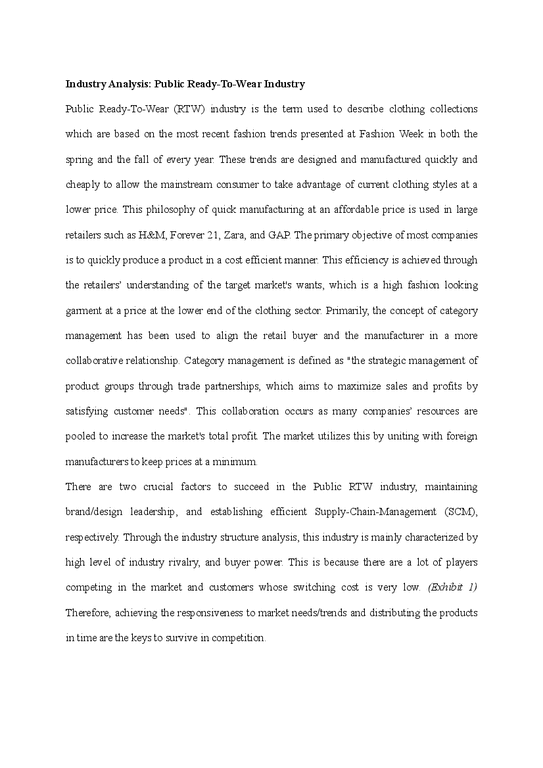 2
2 3
3 4
4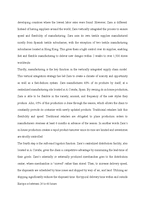 5
5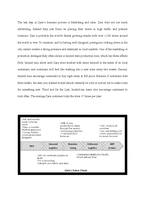 6
6 7
7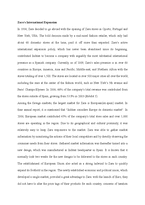 8
8 9
9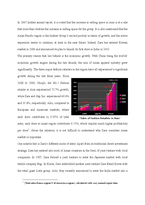 10
10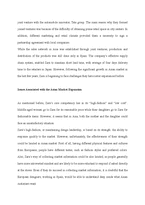 11
11 12
12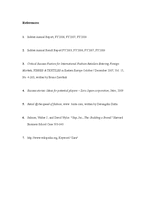 13
13 14
14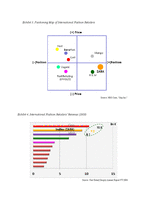 15
15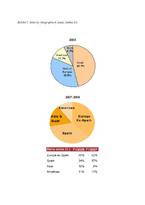 16
16 17
17
추천 연관자료
- 목차
-
Industry Analysis: Public Ready-To-Wear Industry
The Drivers of Zara’s Rapid Growth
Internal Analysis: Zara’s Value Chain
Zara’s International Expansion
Asia: The Fastest Growing Market
Issues Associated with the Asian Market Expansion
References:
- 본문내용
-
Industry Analysis: Public Ready-To-Wear Industry
Public Ready-To-Wear (RTW) industry is the term used to describe clothing collections which are based on the most recent fashion trends presented at Fashion Week in both the spring and the fall of every year. These trends are designed and manufactured quickly and cheaply to allow the mainstream consumer to take advantage of current clothing styles at a lower price. This philosophy of quick manufacturing at an affordable price is used in large retailers such as H&M, Forever 21, Zara, and GAP. The primary objective of most companies is to quickly produce a product in a cost efficient manner. This efficiency is achieved through the retailers’ understanding of the target market's wants, which is a high fashion looking garment at a price at the lower end of the clothing sector. Primarily, the concept of category management has been used to align the retail buyer and the manufacturer in a more collaborative relationship. Category management is defined as "the strategic management of product groups through trade partnerships, which aims to maximize sales and profits by satisfying customer needs". This collaboration occurs as many companies’ resources are pooled to increase the market's total profit. The market utilizes this by uniting with foreign manufacturers to keep prices at a minimum.
There are two crucial factors to succeed in the Public RTW industry, maintaining brand/design leadership, and establishing efficient Supply-Chain-Management (SCM), respectively. Through the industry structure analysis, this industry is mainly characterized by high level of industry rivalry, and buyer power. This is because there are a lot of players competing in the market and customers whose switching cost is very low. (Exhibit 1) Therefore, achieving the responsiveness to market needs/trends and distributing the products in time are the keys to survive in competition.
The Drivers of Zara’s Rapid Growth
“The middle-aged mother buys clothes at Zara because they are cheap, while her dauthter aged in the 20s buys Zara because it is fashionable.” -By Devanhshu Dutta-
Among many competitors, Zara’s products and brand image are characterized by high-fashion and low-medium price. (Exhibit 3) Generally, these two characteristics couldn’t be easily achieved at the same time. However, Zara has been able to achieve this due to its core competencies that provide the all steps of the production process with a competitive advantage over traditional retailers in the industry. Many retailers in the industry usually outsource all of their production while focusing on distributing and retailing those goods. This is due to the fact that the global apparel industry is “highly-labor intensive” rather than capital intensive. That is why a lot of fashion retailers and apparel manufacturers are always seeking to lower costs by outsourcing production to developing countries where the labor cost is very low. However, Zara has developed a successful diverse method of doing business in the fashion industry, by working through the whole value chain, which is very vertically integrated. This vertically integrated business system of Zara has allowed the company to successfully create a climate of scarcity and opportunity as well as a fast-fashion system. Therefore, Zara has been able to be flexible in the variety, amount, and frequency of the new styles they produce. Also, 85% of the production is done through the season, which allows the chain constantly provide its customer with updated products. Furthermore, Zara has a quick response system, which allows the company to respond to the demand of its customer better than the competitors. For example, Zara’s product development teams are responsible for attending high-fashion fairs and exhibitions to translate the latest trends of the season into their designs. Also, Zara’s product development teams are constantly researching the market by traveling to universities, and clubs to track customer needs. These activities and efforts enable the company to achieve high-fashion brand image.
In addition to high-fashion brand image, Zara has achieved affordable price. This is due to the fact that Zara has amassed centralized distribution facility gives the chain a competitive advantage by minimizing the lead-time of their goods. Zara’s internally or externally produced merchandise goes to the distribution center. This is cost-effective due to the close proximities of the distribution center in Arteixo and their factories in Coruna.
Internal Analysis: Zara’s Value Chain
If we look deeper into Zara’s business process, we can draw a value chain that consists with five steps of business activities. They are research and design, inbound logistics, manufacturing, outbound logistics, marketing and sales.
The first step of the process is its researc
- 참고문헌
-
1. Inditex Annual Report, FY2006, FY2007, FY2008
2. Inditex Annual Result Report FY2003, FY2006, FY2007, FY2008
3. Critical Success Factors for International Fashion Retailers Entering Foreign Markets, FIBRES & TEXTILES in Eastern Europe October / December 2007, Vol. 15, No. 4 (63), written by Bruno Završnik
4. Success stories: Ideas for potential players – Zara Japan corporation, Jetro, 2009
5. Retail @ the speed of fashion, www. 3isite.com, written by Devangshu Dutta
6. Salmon, Walter J., and David Wylie. "Gap, Inc., The: Building a Brand." Harvard Business School Case 593-043.
7. http://www.wikipedia.org, Keyword "Zara"
자료평가
-
아직 평가한 내용이 없습니다.
오늘 본 자료
더보기

최근 판매 자료
- 토스 마케팅 전략 분석
- A+ 인적자원관리 - 5주차 1강에서 모집에 대하여 학습하였습니다. 인적자원관리에서의 모집은 조직의 지속가능경영에 밀접한 영향을 미칩니다. 현재 (2020년 대) 시장 상황에 맞는 효과적인 모집에 대하여 설명하시오.
- [A+ 리포트] 최근 빅데이터의 개념 및 활용 사례를 제시하고, 빅데이터 기술로 인해 발생한 문제점과 해결책을 조사하여 리포트를 작성하시오.
- SNS마케팅 개념,효과분석 및 국내,해외기업 도입사례분석과 SNS마케팅 향후방향 제시
- 신라호텔 마케팅 SWOT,STP,4P전략 분석 및 호텔신라 기업 핵심역량 및 경쟁우위분석과 신라호텔 이미지개선위한 전략 제언
- 경영전략론_1 산업의 수익을 결정하는 마이클 포터의 5force에 대하여 특정 산업의 예를 들어 설명하시오 2 핵심역량을 결정하는 3가지 요인과 핵심역량 전략에 관하여 사례를 통하여 설명하시오 3 4차 산업혁명에 따른 제품(product) 일하는 과정(process) 요구하는 사람과 깅버문화(people)가 어떻게 변화하여야 하는지에 관한
- [경영전략] 마이클 포터의 5 Force모델에 따른 미스터피자 분석
- (A+) [인간관계론] 4주 1강에서 매슬로우의 욕구 5단계에 대해 학습하였습니다. 개인행동은 일반적으로 특정 시점에서 가장 강한 욕구에 의해서 결정된다고 매슬로우는 정의하였습니다. 매슬로우의 욕구 이론을 본인의 상황에 맞게 설명 한 후, 욕구이론의 장단점을 제시해 봅시다.
- [경제학개론 A+받은자료] 수요곡선과 공급곡선이 일반적인 경우 수요의 가격탄력성이 공급에 비해 비탄력적인 경우 소주에 조세를 부과하면 소주시장에 어떤 변화가 있는지 다음 질문에 답해봅시다.
- 쿠팡 마케팅 4P전략과 쿠팡 SWOT,STP분석 및 쿠팡 기업현황과 미래전략방향 제시
저작권 관련 사항 정보 및 게시물 내용의 진실성에 대하여 레포트샵은 보증하지 아니하며, 해당 정보 및 게시물의 저작권과 기타 법적 책임은 자료 등록자에게 있습니다. 위 정보 및 게시물 내용의 불법적 이용, 무단 전재·배포는 금지됩니다. 저작권침해, 명예훼손 등 분쟁요소 발견시 고객센터에 신고해 주시기 바랍니다.









